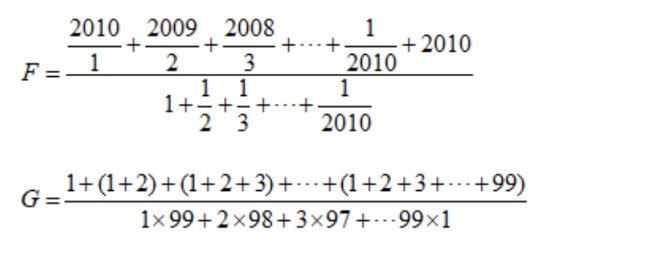
Hãy nhập câu hỏi của bạn vào đây, nếu là tài khoản VIP, bạn sẽ được ưu tiên trả lời.


780-(x-45):2=120
=>(x-45):2=780-120=660
=>\(x-45=660\times2=1320\)
=>x=1320+45=1365

b: \(\dfrac{4^5+4^5+4^5+4^5}{3^5+3^5+3^5}\cdot\dfrac{6^5+6^5+6^5+6^5+6^5+6^5}{2^5+2^5}=8^x\)
=>\(8^x=\dfrac{4\cdot4^5}{3\cdot3^5}\cdot\dfrac{6\cdot6^5}{2\cdot2^5}\)
=>\(8^x=\dfrac{4^6}{2^6}\cdot\dfrac{6^6}{3^6}=2^6\cdot2^6=2^{12}=\left(2^3\right)^4=8^4\)
=>x=4

1: \(5^{x+4}-3\cdot5^{x+3}=2\cdot5^{11}\)
=>\(5^{x+3}\cdot5-3\cdot5^{x+3}=2\cdot5^{11}\)
=>\(2\cdot5^{x+3}=2\cdot5^{11}\)
=>x+3=11
=>x=8
2: \(\dfrac{1}{2}\cdot2^x+4\cdot2^x=9\cdot2^5\)
=>\(2^x\cdot\left(\dfrac{1}{2}+4\right)=9\cdot2^5\)
=>\(2^x\cdot\dfrac{9}{2}=9\cdot2^5\)
=>\(2^x=2^6\)
=>x=6
3: \(9^{2x+1}=27^3\)
=>\(3^{4x+2}=3^9\)
=>4x+2=9
=>4x=7
=>\(x=\dfrac{7}{4}\)
4: \(2^{-1}\cdot2^x+4\cdot2^x=9\cdot2^5\)
=>\(2^x\left(4+\dfrac{1}{2}\right)=9\cdot2^5\)
=>\(2^x\cdot\dfrac{9}{2}=9\cdot2^5\)
=>\(2^x=9\cdot2^5:\dfrac{9}{2}=2^6\)
=>x=6
5: \(\left(2x-1\right)^3=\dfrac{8}{27}\)
=>\(\left(2x-1\right)^3=\left(\dfrac{2}{3}\right)^3\)
=>\(2x-1=\dfrac{2}{3}\)
=>\(2x=\dfrac{2}{3}+1=\dfrac{5}{3}\)
=>\(x=\dfrac{5}{3}:2=\dfrac{5}{6}\)

Gọi số điểm cho trước là x(điểm)
(Điều kiện: \(x\in Z^+;x>3\))
Số điểm không thẳng hàng là x-3(điểm)
TH1: vẽ 1 đường thẳng đi qua 3 điểm thẳng hàng
=>Có 1 đường thẳng
TH2: Chọn 2 điểm bất kì trong x-3 điểm còn lại
Số đường thẳng là \(C^2_{x-3}=\dfrac{\left(x-3\right)!}{\left(x-3-2\right)!\cdot2!}=\dfrac{\left(x-4\right)\left(x-3\right)}{2}\)(đường)
TH3: Chọn 1 điểm trong 3 điểm thẳng hàng, 1 điểm trong x-3 điểm còn lại
=>Có 3(x-3) đường thẳng
Tổng số đường thẳng là 120 đường nên ta có:
\(1+\dfrac{\left(x-4\right)\left(x-3\right)}{2}+3\left(x-3\right)=120\)
=>\(\dfrac{2+\left(x-4\right)\left(x-3\right)+6\left(x-3\right)}{2}=120\)
=>2+(x-4)(x-3)+6(x-3)=240
=>\(2+x^2-7x+12+6x-18=240\)
=>\(x^2-x-244=0\)
=>\(\left[{}\begin{matrix}x=\dfrac{1+\sqrt{977}}{2}\left(loại\right)\\x=\dfrac{1-\sqrt{977}}{2}\left(loại\right)\end{matrix}\right.\)

27.75 + 25.27 - 150
= 27.(75 + 25) - 150
= 27.100 - 150
= 2700 - 150
= 2550
b; 142 - [50 - (23 x 10 - 23.5)]
= 142 - [50 - 23x (10 - 5)]
= 142 - [50 - 23 x 5]
= 142 - [50 - 115]
= 142 - [ - 65]
= 142 + 65
= 207

\(F=\dfrac{\dfrac{2010}{1}+\dfrac{2009}{2}+...+\dfrac{1}{2010}+2010}{1+\dfrac{1}{2}+...+\dfrac{1}{2010}}\)
\(=\dfrac{\left(\dfrac{2010}{1}+1\right)+\left(\dfrac{2009}{2}+1\right)+...+\left(\dfrac{1}{2010}+1\right)}{1+\dfrac{1}{2}+...+\dfrac{1}{2010}}\)
\(=\dfrac{\dfrac{2011}{1}+\dfrac{2011}{2}+...+\dfrac{2011}{2010}}{1+\dfrac{1}{2}+...+\dfrac{1}{2010}}=2011\)

a: 15:(x+2)=3
=>\(x+2=\dfrac{15}{3}=5\)
=>x=5-2=3
b: 20(1+x)=2
=>\(x+1=\dfrac{2}{20}=\dfrac{1}{10}\)
=>\(x=\dfrac{1}{10}-1=-\dfrac{9}{10}\)
f: \(12x-33=3^2\cdot3^3\)
=>\(12x-33=3^5=243\)
=>12x=243+33=276
=>\(x=\dfrac{276}{12}=23\)
g: 541+(218-x)=73
=>218-x=73-541=-468
=>x=218+468=686

a) Ta có:
\(\left(x-5\right)⋮\left(x+1\right)\\ \Rightarrow\left(x+1-6\right)⋮\left(x+1\right)\\ \Rightarrow-6⋮\left(x+1\right)\\ \Rightarrow\left(x+1\right)\inƯ\left(-6\right)=\left\{\pm1,\pm2,\pm3,\pm6\right\}\)
\(\Rightarrow x\in\left\{0,-2,1,-3,2,-4,5,-7\right\}\) (thỏa mãn điều kiện x nguyên)
Vậy...
b) Ta có:
\(\left(x+2\right)⋮\left(x-3\right)\\ \Rightarrow\left(x-3+5\right)⋮\left(x-3\right)\\ \Rightarrow5⋮\left(x-3\right)\\ \Rightarrow\left(x-3\right)\inƯ\left(5\right)=\left\{\pm1,\pm5\right\}\)
\(\Rightarrow x\in\left\{4,2,8,-2\right\}\) (thỏa mãn điều kiện x nguyên)
Vậy...
a) Do `x` là số nguyên
`=> x - 5 ` và `x + 1` là các số nguyên
Ta có: `x-5 ⋮ x+1`
`=> (x+1) - 6 ⋮ x+1`
Do `x + 1 ⋮ x+1`
`=> 6 ⋮ x+1`
`=> x + 1` thuộc `Ư(6) =` {`-6;-3;-2;-1;1;2;3;6`}
`=> x` thuộc {`-7;-4;-3;-2;0;1;2;5`} (Thỏa mãn)
b) Do `x` là số nguyên
`=> x +2` và `x -3` là các số nguyên
Ta có: `x+2 ⋮ x-3`
`=> (x-3) + 5 ⋮ x-3`
Do `x-3 ⋮ x-3`
`=> 5 ⋮ x-3`
`=> x -3` thuộc `Ư(5) =` {`-5;-1;1;5`}
`=> x` thuộc {`-2;2;4;8`} (Thỏa mãn)

Thời gian xe thứ nhất đi từ A đến chỗ gặp là:
\(8h30p-6h25p=2h5p=\dfrac{25}{12}\left(giờ\right)\)
Thời gian xe thứ hai đi từ A đến chỗ gặp là:
\(8h30p-7h40p=50p=\dfrac{5}{6}\left(giờ\right)\)
Vận tốc của xe thứ nhất là:
\(12\times\dfrac{5}{6}:\left(\dfrac{25}{12}-\dfrac{5}{6}\right)=10:\dfrac{15}{12}=10\times\dfrac{4}{5}=8\left(\dfrac{km}{h}\right)\)
Vận tốc của xe thứ hai là 8+12=20(km/h)

 Gíup mình nha
Gíup mình nha
Sửa đề: \(\dfrac{0,375-0,3+\dfrac{3}{11}+\dfrac{3}{12}}{-0,625+0,5-\dfrac{5}{11}-\dfrac{5}{12}}+\dfrac{1,5+1-0,75}{2,5+\dfrac{5}{3}-1,25}\)
\(=\dfrac{\dfrac{3}{8}-\dfrac{3}{10}+\dfrac{3}{11}+\dfrac{3}{12}}{-\dfrac{5}{8}+\dfrac{5}{10}-\dfrac{5}{11}-\dfrac{5}{12}}+\dfrac{\dfrac{3}{2}+\dfrac{3}{3}-\dfrac{3}{4}}{\dfrac{5}{2}+\dfrac{5}{3}-\dfrac{5}{4}}\)
\(=\dfrac{3\left(\dfrac{1}{8}-\dfrac{1}{10}+\dfrac{1}{11}+\dfrac{1}{12}\right)}{-5\left(\dfrac{1}{8}-\dfrac{1}{10}+\dfrac{1}{11}+\dfrac{1}{12}\right)}+\dfrac{3\left(\dfrac{1}{2}+\dfrac{1}{3}-\dfrac{1}{4}\right)}{5\left(\dfrac{1}{2}+\dfrac{1}{3}-\dfrac{1}{4}\right)}\)
\(=\dfrac{3}{-5}+\dfrac{3}{5}=0\)